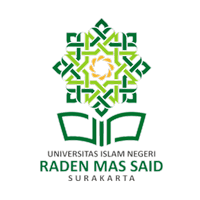Abdullah, A. R. (2022). Pengantar Ilmu Antropologi. CV. Literasi Nusantara Abadi.
Andini, Hanifah, D. (2017). Makna Kultural dalam Leksikon Perlengkapan Seni Begalan Masyarakat Desa Selakambang Kecamatan Kaligondang Kabupaten Purbalingga. Jurnal Sastra Indonesia, 6(2).
Aritonang, Y., & Arfianty, R. (2024). Analisis Unsur Intrinsik Tokoh Dan Penokohan Roronoa Zoro Pada Komik One Piece. Jurnal Pendidikan Bahasa Jepang Undiksha, 10(2), 157–160. https://doi.org/10.23887/jpbj.v10i2.72013
Budiastuti, E. D. (2015). Persepsi Masyarakat Terhadap Makna Simbolik dan Tinjauan Hukum Islam dalam Tradisi Begalan di Desa Karangsalam Kecamatan Kemranjen Kabupaten Banyumas. Program Studi Pendidikan Bahasa Dan Sastra Jawa, 06(02), 63–71.
Cristie Agustiin, et. al. (2024). Warisan Budaya Karo Yang Terancam Upaya Pelestarian Dan Pengembangan Tradisi Topeng Tembut-Tembut. Jurnal Cakrawala Ilmiah, 3(8), 3–8. https://www.bajangjournal.com/index.php/JCI/article/view/7652
Feriska, A. & M. F. . (2024). Istilah dalam Leksikon Tradisi Begalan pada Masyarakat Banyumas:Kajian Antropolinguistik. Jurnal Wicara, 09(2), 4853–4861.
Hardani, Andriani, H., Ustiawaty, J., Utami, E. F., Istiqomah, R. R., Fardani, R. A. F., Sukmana, D. J., & Auliya, N. H. (2020). Metode Penelitian Kualitatif dan Kuantitatif ISBN: 978-623-7066-33-0. In Pustaka Ilmu (Issue March).
Herusatoto, B. (2008). Banyumas Sejarah, Bahasa, Watak, Seni, dan Budaya. PT LKiS Pelangi Aksara.
Iryani, E., & Marrienlie, S. (2020). Analisis Semantik Makna Kontekstual Kata Wali Dan Auliyā’ Dalam Al-Qur’an Surah An-Nisa. AD-DHUHA : Jurnal Pendidikan Bahasa Arab Dan Budaya Islam, 1(1).
Jama, K. B. (2021). Makna Kontekstual Dalam Cerpen Jejak Pelangi Di Gunung Kenari Karya Jefta H. Atapeni. Jurnal Lazuardi, 4(2), 99–113. https://doi.org/10.53441/jl.vol4.iss2.64
Kamaludin, M., & BS, A. W. (2021). Meneropong Nilai Religius Islam dan Nilai Moral dalam Tradisi Begalan yang Berkembang di Karesidenan Banyumas. JISIP (Jurnal Ilmu Sosial Dan Pendidikan), 5(3), 61–67. https://doi.org/10.36312/jisip.v5i3.2076
Kemal. (2016). Ishtifa Kemal, Analisis Tokoh. Analisis Tokoh Dan Penokohan Dalam Hikayat Muda Balia Karya Teuku Abdullah Dan M. Nasir, II, 61–74.
Khotimah & Ika Febriani. (2019). Kajian Senamtik Nama Diri Mahasiswa Madura di Prodi Pendidikan Bahasa dan Sastra Indonesia Universitas Trunojoyo Madura. Jurnal Pendidikan Bahasa Dan Sastra Indonesia, 8(1), 104–115. https://journal.unnes.ac.id/sju/index.php/jpbsi/article/view/24018
Maghfiroh, A., & Nurhayati, N. (2023). Makna Kultural pada Kepercayaan Masyarakat Jawa Terhadap Ketupat di Momen Lebaran: Kajian Antropologi Linguistik. Madah: Jurnal Bahasa Dan Sastra, 14(2), 216–228. https://doi.org/10.31503/madah.v14i2.640
Mastiah, M., & Albar, J. (2024). Pelestarian Cerita Rakyat Kabupaten Melawi dan Relevansinya dengan Pembelajaran Bahasa Indonesia di Sekolah Dasar. Jurnal Pendidikan Dasar, 12(1), 163–172. https://doi.org/10.46368/jpd.v12i1.2569
Munandar, A. et. al. (2018). Penggunaan Buku Cerita Anak Berbasis Kearifan Lokal Mendong Tasikmalaya di Sekolah Dasar. All Rights Reserved, 5(2), 152–162. http://ejournal.upi.edu/index.php/pedadidaktika/index
Musthafa, I., Ghazali, D. A., & Syafe, I. (2020). Pendekatan Semantik Kontekstual Menurut Para Linguis Barat dan Timur. Pendekatan Semantik Konstktual Menurut Para Linguistik Barat Dan Timur, 1–14.
Nafinuddin, S. (2020). Pengantar semantik (pengertian, hakikat, jenis). Pengantar Sematik, 1–21. https://doi.org/10.31219/osf.io/b8ws3
Nurgiyantoro, B. (2018). Teori Pengkajian Fiksi. Gadjah Mada University Press.
Saddhono, K., & Kurniawan, A. (2017). Islamic Religious Value in Traditional Ceremony of Begalan Banyumasan As Educational Character for Student At Senior High Schools in Central Java. UMRAN - International Journal of Islamic and Civilizational Studies, 4(1–1), 71–77. https://doi.org/10.11113/umran2017.4n1-1.206
Sibarani, R. (2024). Antropolinguistik: Sebuah Pendekatan. Yayasan Pustaka Obor Indonesia.
Tjahyadi, I., Andayani, S., & Wafa, H. (2020). Pengantar Teori dan Metode Penelitian Budaya.
Wahyu, E. A. A., & Brata, N. T. (2020). Redefinisi Makna Tradisi Begalan Oleh Sanggar Sekar Kantil Dalam Ritus Pernikahan Masyarakat Banyumas Redefinition of the Begalan Tradition Meanings By Sanggar Sekar Kantil in the Marriage Rites in the Banyumas Community. Budaya Etnika, 4(2), 1–11.
Wijaya, H. (2015). Research Method Spradley Model. Jakarta: Salemba Humanika, 283–284.
Yahya, M. D., Zazimatul, A., & Soliqah, I. (2022). Amorti : Jurnal Studi Islam Interdisipliner Akulturasi Budaya pada Tradisi Wetonan dalam Perspektif Islam. Jurnal Studi Islam Interdisipliner, 1(1), 55–67. http://journal.amorfati.id/index.php/amorti
Yordania, B. R., & Fateah, N. (2024). Makna Leksikal, Makna Kultural, dan Kearifan Lokal dalam Leksikon Peternakan Sapi Perah di Kecamatan Cepogo, Kabupaten Boyolali. Stilistika: Jurnal Pendidikan Bahasa Dan Sastra, 17(2), 147–168. https://doi.org/10.30651/st.v17i2.22718


